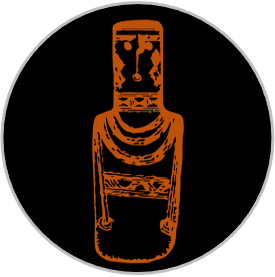
Hi there and welcome to the experimental fusion of open access research and project blogging that is this website!
I am a PhD student of biological sciences at the University of Exeter, Penryn campus, where I am both a lab member and journal group organiser for the Human Behaviour and Cultural Evolution Group (HuBCEG). Whilst my background spans both anthropology and neurobiology, my current research investigates the impact of social network structure on cumulative cultural evolution: how technologies, ecological knowledge, social institutions, and symbolic beliefs increase in complexity and functionality over time. The primary aim here is to understand whether human social networks operate to solve adaptive problems in a similar manner to the way that networks of neurons in the brain function to solve cognitive challenges – through group-level emergence! Both kinds of networks, social and neural, express modular multi-level clustering in how nodes are linked to each other (see image below). Whether this similarity is superficial or functional and the product of evolutionary selection could turn out to be an extremely important question in the coming future, when humanity as whole will have to adapt culturally and socially to increasingly unstable environments.

The relationship between social networks and culture is that of a dynamically evolving system of back and forth exchanges, where culture shapes social networks and social networks influence the diffusion and recombination of cultural information. 2020 has unfortunately been the perfect example of this. Our global trade and transport networks created the perfect niche for the biological evolution of pandemic-level viruses. The arrival of Covid-19 resulted in the evolution of cultural strategies adapted to mitigate viral impact by restricting social networks. And these altered social networks in turn have had a profound impact upon the ongoing evolution of various cultural institutions (particularly ones within the health and entertainment sectors) as well as demand for particular cultural technologies (cultural selection).
Such systems are mind-bogglingly complex, and it is often impossible for human brains to play out all the possible outcomes for various combinations of factors that need to be explored. Even for anthropologists and archaeologists that take a holistic or ‘bird’s eye-view’ approach to studying human societies, what is seen in the field or history is but a fraction of the possible outcomes of the system’s potential evolutionary trajectories. Why do certain social institutions and technologies reappear across time and space and not others? These kinds of questions cannot be answered in the field for both history and the present are a one-shot game. As researchers, we must be humble in the face of the natural world’s awesome (yet sometimes subtle) complexity. I therefore try to answer research questions in simplified ‘toy’ models of possible scenarios; computer simulations that check the logic of descriptive theories and generate further predictions for empirical researchers in the field and in the lab.

